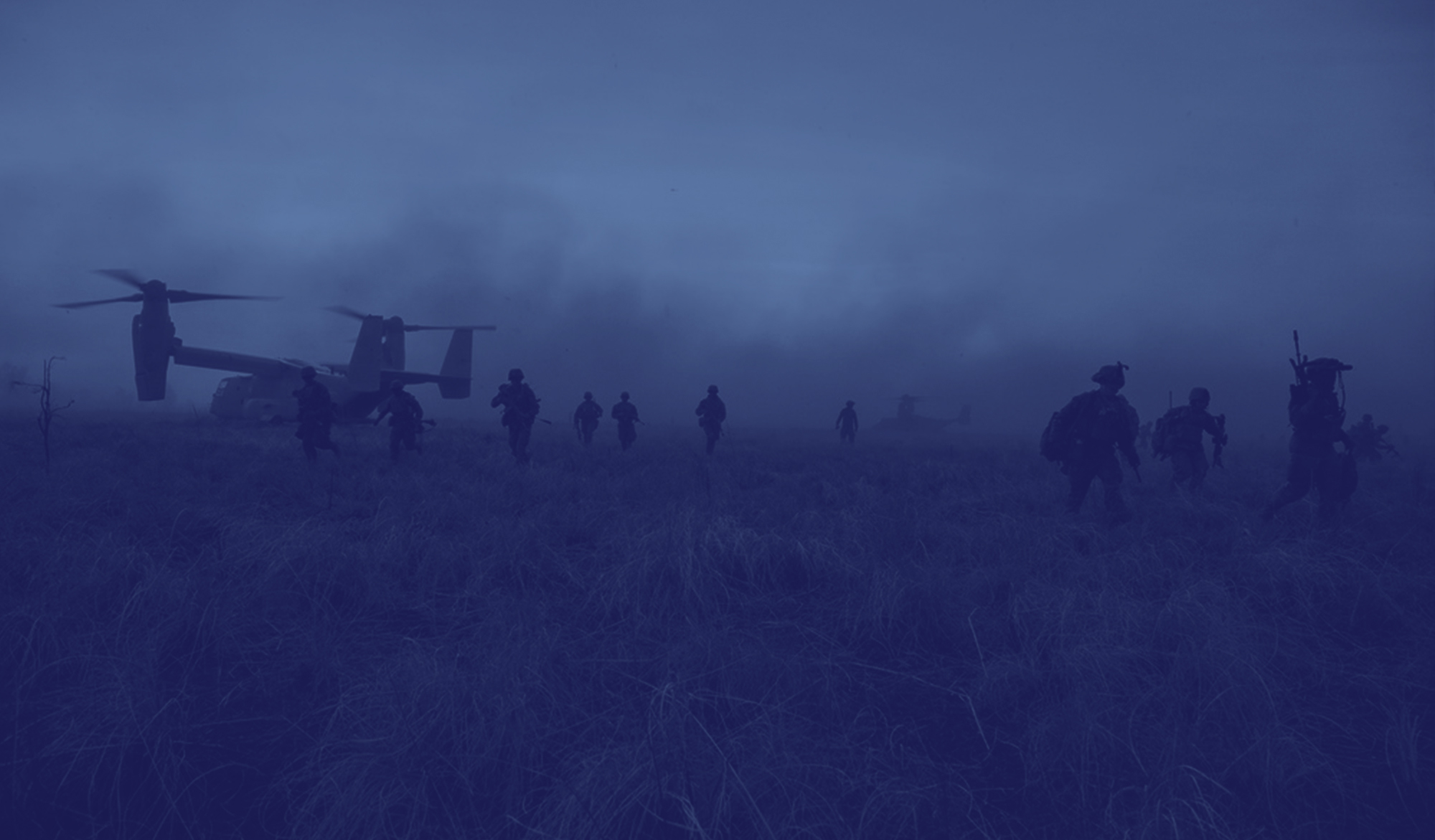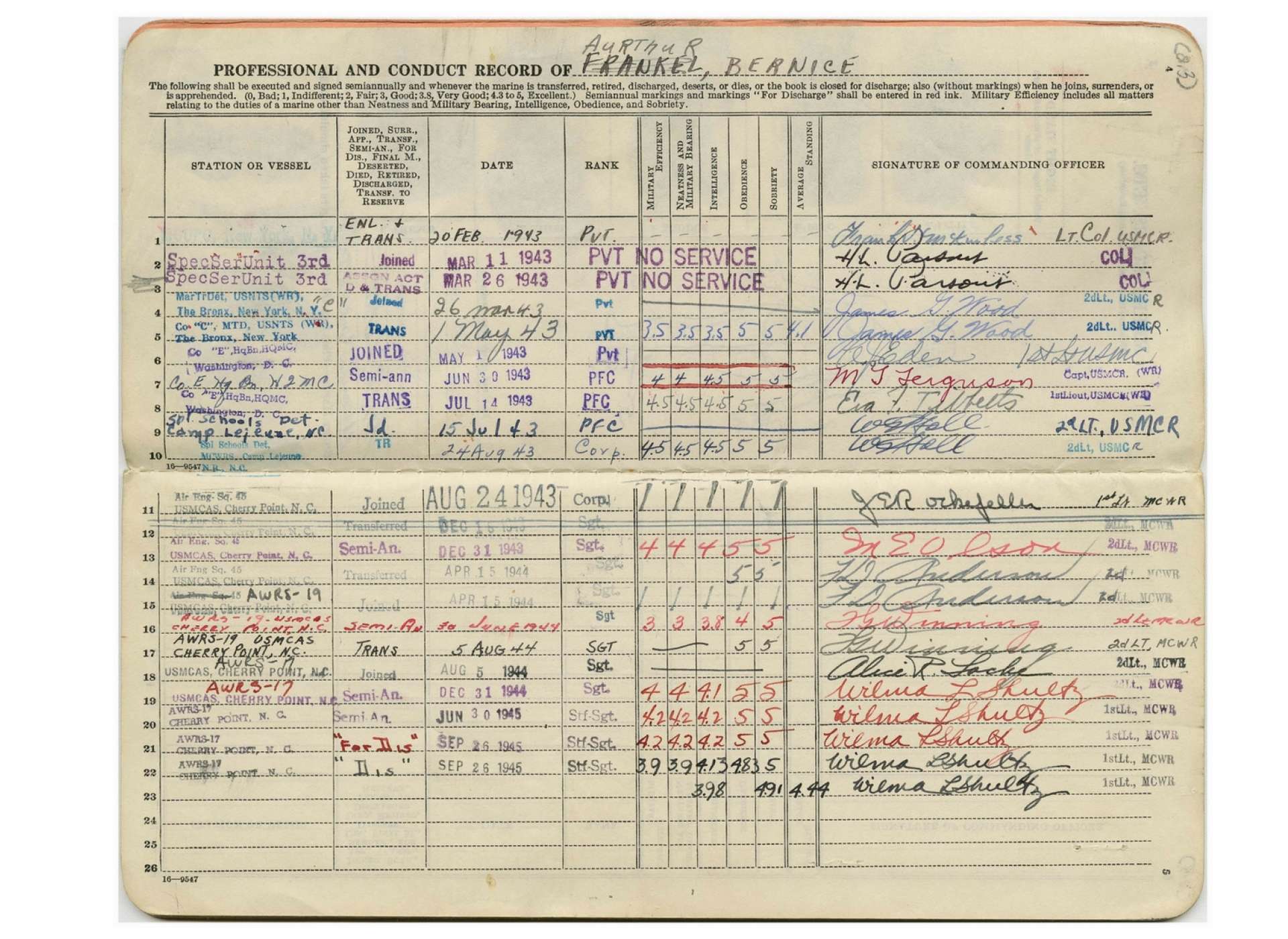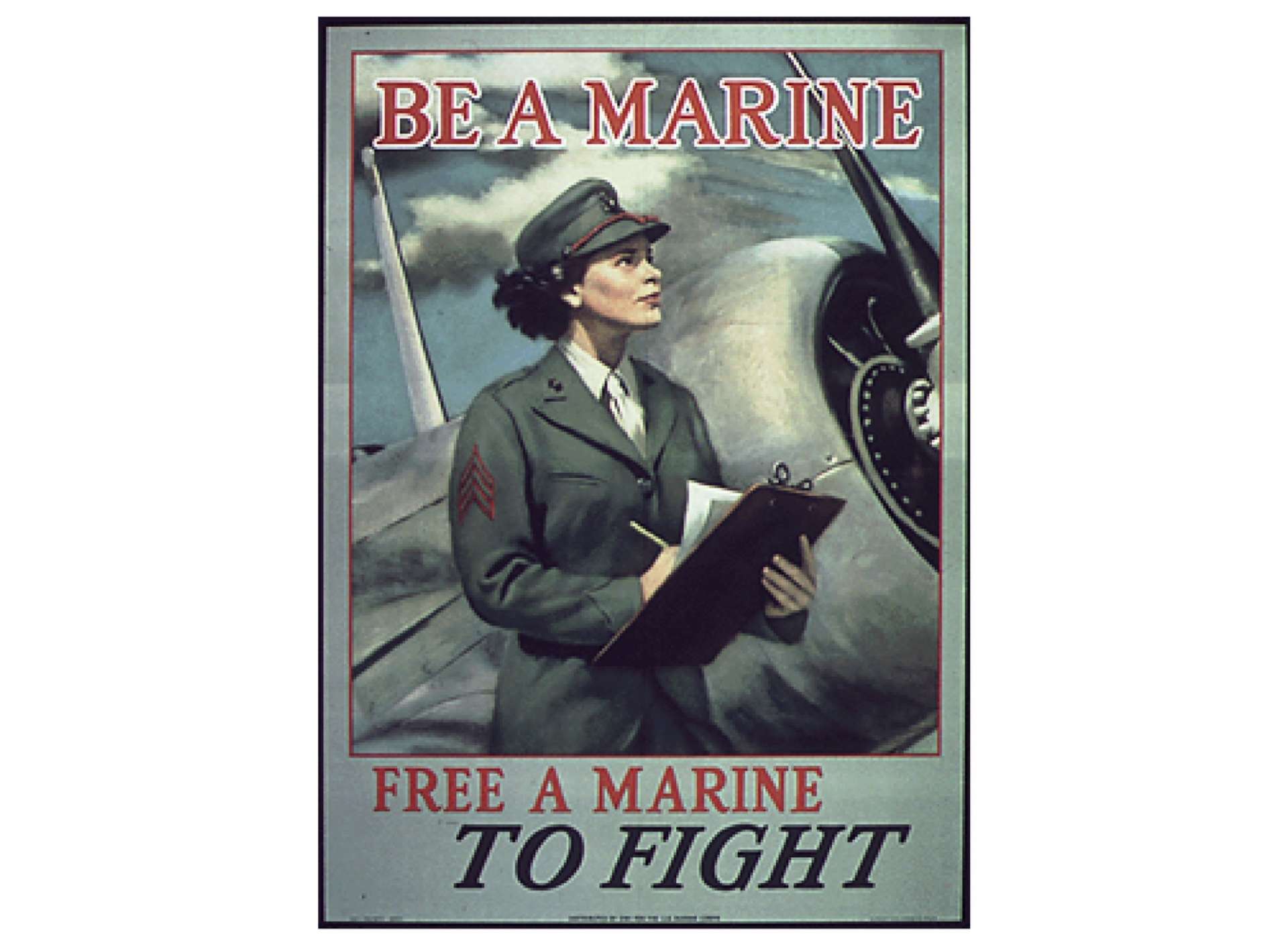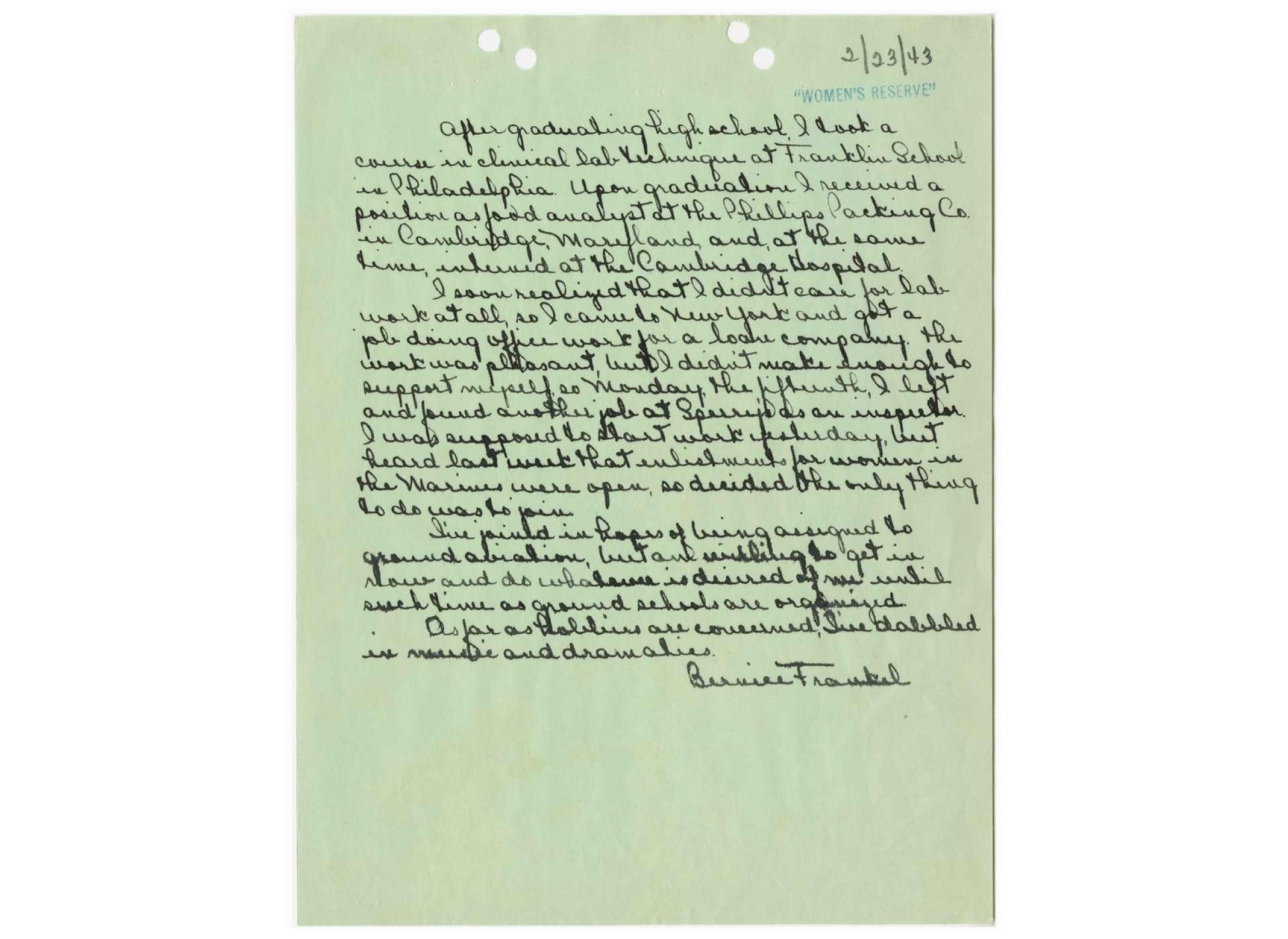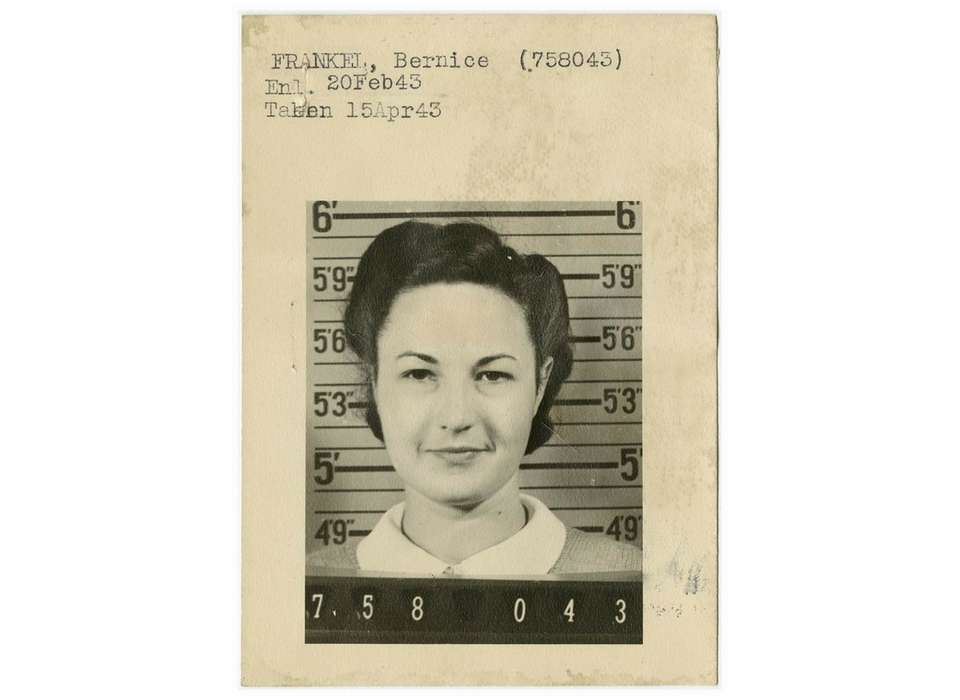
Bea Arthur, US Marine
BY: Kali Martin
April 12, 2018
Bernice Frankel’s Official Military Personnel File reveals a Golden Girl’s WWII service history.

Before she took to Broadway stages and became a beloved Golden Girl, Bernice Frankel, better known today as Bea Arthur, joined thousands of other women paving the way for women in the armed forces. Details of her time as a US Marine can be found in her Official Military Personnel File (OMPF) available from the National Archives. Housed at a massive facility in St. Louis, Missouri, these military records hold a wealth of information on individuals.
On February 13, 1943, a call went out to women across America: “Be a Marine . . . Free a Man to Fight.” The US Marine Corps had established the Women’s Reservists, making the Corps the last service branch to allow women into its ranks. Despite reservations by Corps Commandant General Thomas Holcomb, the Marine Corps began a program to put women in as many positions as possible, enabling male Marines to join combat units. Public opinion favored a catchy nickname for these new female Marines, with suggestions of names like Glamarines and Femarines. General Holcomb wasn’t having any cute names for his Marines. “They are Marines,” he told Life magazine in 1944. “They don’t have a nickname and they don’t need one. . . . They inherit the traditions of Marines. They are Marines.” More than 20,000 Women Reservists had earned the title of Marine by the end of World War II. Though relegated to noncombat roles, they played a vital role in the Marine Corps during the war.
On February 18, 1943, just five days after the Marine Corps began recruiting women, a young Bernice Frankel went to enlist. She was born in New York City and her parents were immigrants from Europe—her mother from Austria, and her father from Poland. The family, including two younger daughters, moved to Cambridge, Maryland, where Arthur graduated from high school. After high school, she attended Blackstone College in Blackstone, Virginia, for a year, then returned to Cambridge to work for several months as a food analyst at Phillips Packing Company, where she tested products for mold and bacteria. Afterward, she moved to New York and worked various jobs, and volunteered in the civilian war effort as an air-raid warden. Her favorite hobbies were music, reading, and sailing.
“For those of us who remember her best as the incisive Dorothy Zbornak on Golden Girls, Arthur’s Personality Appraisals read like those of her television character.”
Two months shy of her 21st birthday, Arthur had to obtain her parents’ consent for her enlistment. Recommendations, physical exams, personality appraisals— enlistment was a lengthy process. The Women Reservists organization was so new that the Marine Corps hadn’t even created the necessary paperwork, and proceeded to enlist women using US Navy paperwork. On February 20, 1943, Bernice Frankel joined the ranks of the Marine Corps as Private Frankel.
Within Arthur’s OMPF we gain glimpses of her as a young woman. School transcripts show she was an average student who studied French and science. She played the piano and organ, enjoyed archery, and studied to become a clinical laboratory technician. For those of us who remember her best as the incisive Dorothy Zbornak on Golden Girls, Arthur’s Personality Appraisals read like those of her television character. Described as having a poised and trim appearance (and exhibiting “meticulous good taste”), Arthur was also considered to be ingratiating, frank, and open, though overly aggressive and argumentative. A special note on one assessment read: “Officious—but probably a good worker if she has her own way!”
Other aspects of Arthur’s life take shape within her OMPF. A copy of her certificate of marriage to her first husband Robert Aurthur is enclosed with her request to change her name to Bernice Aurthur. (She would later alter the spelling to Arthur for her stage name.) A handwritten letter explaining her most recent work experience ends with a note that she had dabbled in music and drama. Arthur also wrote, “I was supposed to start work yesterday, but heard last week that enlistments for women in the Marines were open, so decided the only thing to do was to join.” She said she was eager to do whatever was needed.
Every woman who served in the Marine Corps in World War II has an Official Military Personnel File. These files contain details from their time in the Corps. Enlistment paperwork, transfer orders, schools attended, medical issues, marriages, divorces—it’s all part of their file. An OMPF is a great document to obtain if you also need family information. Most servicemembers included family or spouse names at some point, either for insurance or to have money sent to them. Marine Corps files also include a Service Record book. These books are a remarkable source of details regarding an individual’s service. Every school, station, or ship the individual was assigned to is listed, with dates and their current rank. From Arthur’s file we can learn that she attended the first Women Reservists school at Hunter College in New York. She spent 1944 and 1945 at USMCAS (US Marine Corps Air Station) Cherry Point, North Carolina, where she worked as a driver and a dispatcher. Upon her discharge in September 1945, Arthur had reached the rank of Staff Sergeant. Her discharge paperwork indicates she desired to attend dramatics school, setting her on a path to the stage and screen.
Official Military Personnel Files can be requested from the National Archives through the National Personnel Records Center at St. Louis. For more information on available records and how to request them, see the Museum’s research guide here. Arthur’s personnel file is part of a series called the PEP files: Persons of Exceptional Prominence. These are files of famous individuals and are being digitized by the National Archives. Digital files can be found on the National Archives website: www.archives.gov.
Kali Martin earned a bachelor’s degree in International Studies and German at the University of Miami and a master’s degree in Military and Public History at the University of New Orleans. She began volunteering on the PT-305 restoration project as a graduate student and now serves as a crew member aboard the vessel. As a Research Assistant at the Museum she has worked on a PT-305 exhibit housed in the vessel’s Lakeshore Landing boathouse, written a guide to conducting research on individual participation in World War II, and worked on a variety of projects as part of the President Emeritus’s Office. She is a member of the Museum’s Institute for the Study of War and Democracy.
